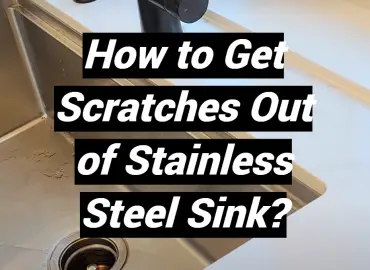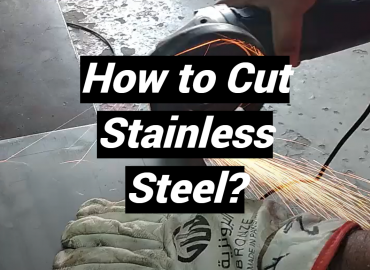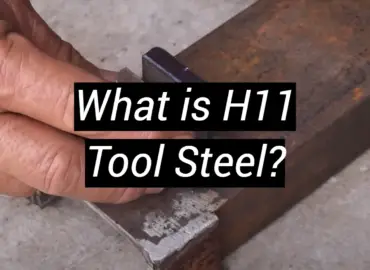Do you have a stainless steel appliance that has started to rust? Or maybe you have some stainless steel tools that have seen better days. In either case, you need to know how to remove rust from stainless steel. If you don’t want your appliances or tools to be permanently damaged, take action against rust as soon as possible. In this blog post, we will discuss the best ways to remove rust from stainless steel. In addition, we will offer suggestions on how you can avoid rust buildup altogether!
Factors Causing Rust on Stainless Steel
There are many reasons why rust appears on stainless steel. One of the most common is exposure to oxygen. When stainless steel is exposed to oxygen, it forms an oxide layer on the surface. This oxide layer protects the underlying metal from further corrosion. However, if the oxide layer is damaged or breached, rust can form on the surface of the stainless steel.
Other factors that can cause rust on stainless steel include:
- Exposure to salt water or other corrosive liquids
- Exposure to chemicals or cleaners that are corrosive
- Damage to the protective oxide layer

Poor quality stainless steel that is not properly protected from corrosion [1]
How to Remove Rust from Stainless Steel?
Method 1: Use Baking Soda To Rub Out Rust
If your stainless steel has a small amount of rust, you can remove it without damaging the metal by using a gentle abrasive like baking soda. Make a paste of baking soda and water, then use a soft cloth to rub it over the rust. Rinse away the paste with water and dry the surface.
Method 2: Use Vinegar To Dissolve Rust
For bigger patches of rust or if the baking soda trick isn’t panning out, give vinegar a go. To remove rust, cover the rusted area with white vinegar or apple cider vinegar and let it sit for around 30 minutes. Use a wire brush to scrub away the rust, then rinse with water and dry thoroughly. You can also soak smaller items in vinegar overnight, then scrub and rinse in the morning.
Method 3: Use Lemon Juice To Bleach Rust
If you’re dealing with stubborn rust stains, lemon juice can help to bleach away. Combine equal parts lemon juice and salt, then rub it onto the rust with a soft cloth. Rinse the area with water after 10 minutes have passed. You can also try using lime juice or vinegar instead of lemon juice.
Method 4: Use A Commercial Rust Remover
If you’ve tried all of the above methods and still can’t get rid of the rust, you can try using a commercial rust remover. Always test the product on a small area first, to make sure that it won’t damage your stainless steel. Make sure to follow the instructions on the product as well.
Method 5: Remove Rust with a Cleaner That Contains Oxalic Acid
If you have rust stains that are proving to be difficult to remove, consider using a cleaner with oxalic acid. You can find this type of cleaner in most hardware stores.[2]
Method 6: Cream of Tartar Paste To Remove Rust
You can also make a paste out of cream of tartar and water to remove rust. Simply mix together equal parts cream of tartar and water, then rub it onto the rust with a soft cloth. Let it sit for about 15 minutes before scrubbing with a wire brush and rinsing away with water.
Method 7: Use A Pumice Stone To Scrub Rust Away
If you have a pumice stone, you can use it to scrub away rust. Wet the pumice stone and rub it over the rust in a circular motion. Be sure to rinse away any residue afterwards so it doesn’t cause more corrosion.
Method 8: Dish Soap and a Potato
If you don’t have any of the above products on hand, you can try using dish soap and a potato to remove rust. Cut a potato in half and add a drop or two of dish soap to the cut side. Rub the potato over the rust in a circular motion, then rinse away with water.
Dealing With Larger Rust Spots
If the rust spot is large, you will need to take a more aggressive approach to remove it. You can start by using a wire brush to scrub at the rust spot. This will help to loosen it and make it easier to remove. If the wire brush doesn’t do the trick, you can try using a sanding block or steel wool. Just be sure to use caution so you don’t damage the stainless steel.

Another option for removing larger rust spots is to use a chemical solution. There are many different products on the market that you can use for this purpose. Just be sure to follow the instructions carefully and always wear gloves and protective eyewear when working with chemicals.
Once you have removed the rust spot, you will need to take steps to protect the stainless steel from future rusting. You can do this by applying a thin layer of oil or wax to the area. This will create a barrier that will help to prevent rust from forming in the future.
Dealing With More Tenacious Rust
If the above methods don’t seem to be working, or if you’re dealing with a more serious rust problem, you may need to resort to tougher measures.
You can try using a chemical rust remover, but be sure to follow the instructions carefully and take precautions to protect yourself from the chemicals. You can also try sanding the rust off with sandpaper or steel wool. If all else fails, you may need to replace the affected piece of stainless steel.
Removing rust from stainless steel can be a challenge, but it’s definitely possible with the right tools and techniques. With a little elbow grease, you should be able to get your stainless steel looking good as new in no time.
Which Cleaners Should I Avoid When Cleaning Stainless Steel?
There are a few cleaners that you should avoid using on stainless steel, as they can damage the surface. Harsh chemicals like bleach and ammonia can dull the finish or leave streaks, so it’s best to steer clear of these. Abrasive cleaners like scouring pads and steel wool can also scratch the surface, so it’s best to use them sparingly or not at all. For everyday cleaning, mild dish soap and water is all you need to keep your stainless steel looking its best.
If you do need to remove rust from stainless steel, there are a few gentle methods you can try.
You can also try using a commercial rust remover, but be sure to read the labels carefully and test it in a small area first to make sure it won’t damage your stainless steel. If all else fails, you can always call in a professional to help get rid of tough rust stains. [3]How Does Rust Ruin Steel?
Rust is one of the biggest enemies of steel. It’s a type of corrosion that happens when oxygen reacts with iron.

This causes the iron to form a reddish-brown substance called iron oxide, or rust. Rust can damage steel in two ways:
- First, it weakens the structure of the metal by causing it to flake and break apart.
- Second, it prevents the steel from being able to properly bond with other metals, which can lead to even more serious problems down the road.
General Tips on Handling Stainless Steel to Prevent Rusting
When working with stainless steel, it is important to remember that it is a highly corrosion-resistant material. However, this does not mean that it is completely immune to rusting. In fact, if stainless steel is not properly cared for, it can develop rust spots. If these spots are not removed, they can eventually cause the entire piece of stainless steel to rust.
There are a few general tips that can help you avoid rusting your stainless steel.
- First, always make sure that your hands are clean and dry before handling the metal. This will help to prevent any dirt or moisture from getting on the surface and causing corrosion.
- Second, avoid using harsh chemicals or cleaners on stainless steel. These can damage the protective layer that prevents rusting.
- Finally, always dry the stainless steel thoroughly after cleaning it. If water is allowed to sit on the surface, it can cause rusting.
The best way to remove rust from stainless steel is to use a product specifically designed for this purpose. There are a number of rust removers available on the market. Be sure to read the labels carefully to find one that is safe for use on stainless steel. You may need to apply the remover a few times to remove all of the rust. Once the rust is gone, be sure to rinse the stainless steel well and dry it thoroughly.
If you are looking for a more natural way to remove rust from stainless steel, you can try using white vinegar. Simply soak a clean cloth in vinegar and wipe down the affected area. Rinse the area well with water and dry it thoroughly. You may need to repeat this process a few times to remove all of the rust.
Another option for removing rust from stainless steel is to use lemon juice. Soak a clean cloth in lemon juice and wipe down the affected area. Rinse the area well with water and dry it thoroughly. You may need to repeat this process a few times to remove all of the rust.
If you are still having trouble removing rust from stainless steel, you can try using a commercial rust remover. Be sure to follow the instructions carefully to avoid damaging the stainless steel. In most cases, you will need to apply the rust remover multiple times to completely remove all of the rust. Once the rust is gone, be sure to rinse the stainless steel well and dry it thoroughly.
How to Prevent Rust on Stainless Steel?
Rust can be very damaging to stainless steel, so it’s important to take measures to prevent it. Stainless steel is an alloy of iron, chromium and nickel, so it’s especially susceptible to rust if it’s exposed to moisture. There are a few simple ways you can protect your stainless steel from rust:
- Keep it clean. Dirt, grease and other contaminants can promote rust formation, so it’s important to keep your stainless steel clean. Regularly wipe down the surface with a mild soap and water solution or a commercially available stainless steel cleaner.
- Protect it from the elements. If possible, store your stainless steel in a cool, dry place out of direct sunlight. If you’re using the stainless steel outdoors, consider investing in a cover or other type of protection from the elements.
- Dry it off promptly. If your stainless steel does get wet, be sure to dry it off as soon as possible. Water can cause corrosion, so it’s important to remove any moisture from the surface of the metal.
- Consider a sealant. If you’re concerned about rust formation, you may want to consider using a sealant on your stainless steel. Sealants provide an extra layer of protection against moisture and other corrosive elements.
- Inspect it regularly. It’s always a good idea to check your stainless steel for signs of rust on a regular basis. If you do find rust, take measures to remove it immediately. Allowing rust to spread can cause extensive damage to the metal.
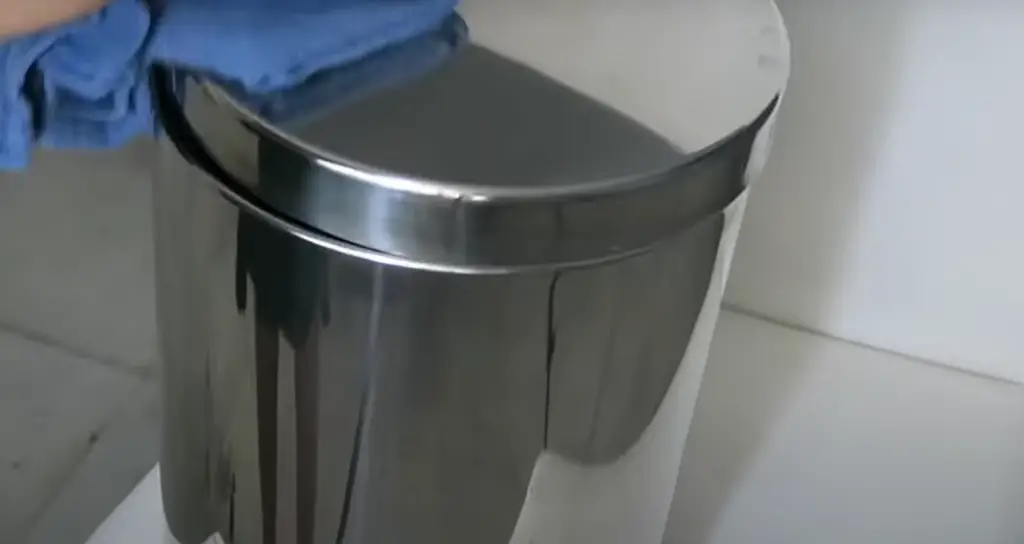
The best way to remove rust from stainless steel is to use a commercial rust remover or white vinegar. If the rust is light, you may be able to remove it with a gentle scrubbing brush. For more stubborn rust, you may need to soak the affected area in the solution for a few hours before scrubbing. Be sure to rinse the area well and dry it off completely after treatment. [4]
How to Store Stainless Steel Items?
If you have any stainless steel items in your home, it’s important to know how to store them properly to prevent rust. Here are some tips:
- Wash and dry the item thoroughly before storing it.
- Store the item in a cool, dry place away from direct sunlight.
- Do not store the item next to other metals, as this can cause corrosion.
- If possible, wrap the item in a soft cloth or paper towel before storing it. This will help protect it from scratches.
- If you’re storing stainless steel pots and pans, hang them up rather than stacking them. This will prevent scratching and keep them looking their best.
With proper care and storage, your stainless steel items will stay rust-free for years to come!
What Else Can Damage Stainless Steel?
While rust is the most common type of damage that can occur to stainless steel, it is not the only type of damage that can occur. Other types of damage that can occur to stainless steel include:
- Pitting – Pitting is a type of corrosion that occurs when small holes form in the surface of the stainless steel.
- Staining – Staining occurs when the surface of the stainless steel becomes discolored. This can be caused by a number of factors, including exposure to chemicals or cleaners that contain chemicals that cause staining. [5]
- Scratching – Scratching can occur when the stainless steel comes into contact with a hard object. This can cause the surface of the stainless steel to become scratched and damaged.
DIY vs Professional Cleaning: What to Choose?
When it comes to stainless steel, there are a number of ways that you can clean and remove rust. You can do it yourself with some elbow grease and the right materials, or you can hire a professional cleaning company to do the job for you. But which is the best option?
There are pros and cons to both choices. DIY cleaning can be less expensive, but it may take longer and be more difficult than you anticipated. Professional cleaning companies have the expertise and experience to get the job done quickly and efficiently. They also have access to better equipment and cleaners.
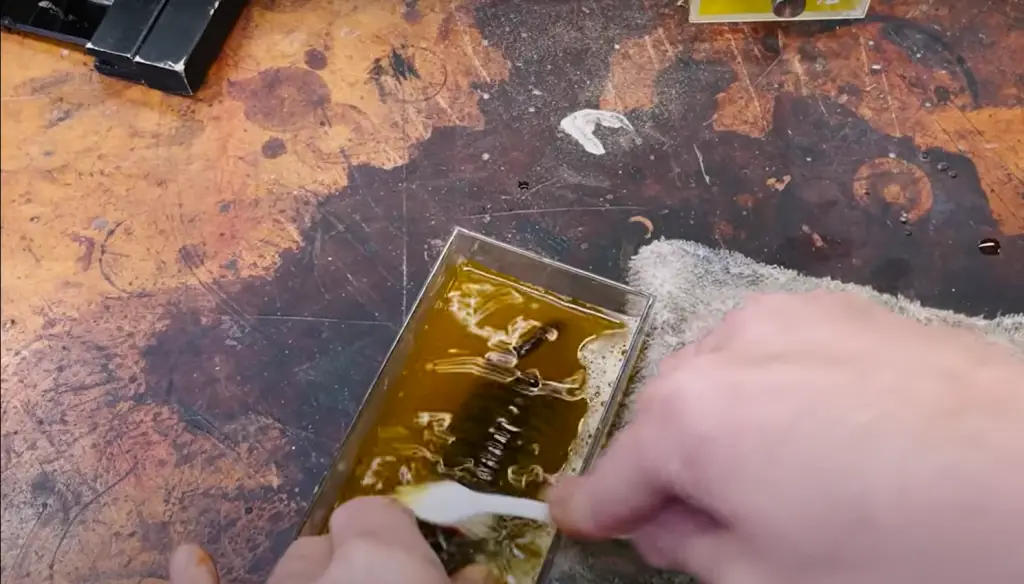
So, what should you do? It really depends on your situation. If you have a small amount of rust, then DIY cleaning might be the way to go. But if you have a lot of rust or it’s difficult to reach, then professional cleaning is probably your best bet.
Can Stainless Steel Get Wet?
It’s a common misconception that stainless steel can’t get wet. In fact, stainless steel is perfectly safe to get wet as long as you’re taking the proper precautions.
If your stainless steel is exposed to water, it’s important to dry it off as soon as possible. Water can cause corrosion and rusting, so it’s best to avoid leaving your stainless steel wet for extended periods of time. [6]
How Do You Make Steel Stay Shiny?
There are a few things you can do to keep your stainless steel looking shiny and new.
If your stainless steel is starting to look dull, you can try cleaning it with a vinegar and water solution. This will help to remove any dirt or grime that’s built up on the surface of the steel.
You can also try polishing your stainless steel with a soft cloth. This will help to restore its original shine.
Is Stainless Steel High Maintenance?
Stainless steel is a low-maintenance material, but it’s not completely maintenance-free.
If you want to keep your stainless steel looking its best, it’s important to clean it on a regular basis. You can use a mild soap and water solution to remove any dirt or grime that’s accumulated on the surface.
It’s also a good idea to polish your stainless steel periodically. This will help to restore its original shine and protect it from corrosion.
Benefits and Disadvantages of Stainless Steel
There are a few advantages and disadvantages of stainless steel that you should be aware of.
Some of the benefits of stainless steel include its durability, low maintenance requirements, and resistance to corrosion. Stainless steel is also a recyclable material, which makes it an eco-friendly choice for many people.
Some of the disadvantages of stainless steel include its high initial cost and the fact that it can be susceptible to fingerprints and smudges.
How Long Will Stainless Steel Last?
Stainless steel is a durable material that can last for many years. With proper care, it will continue to look good and function properly for a long time.
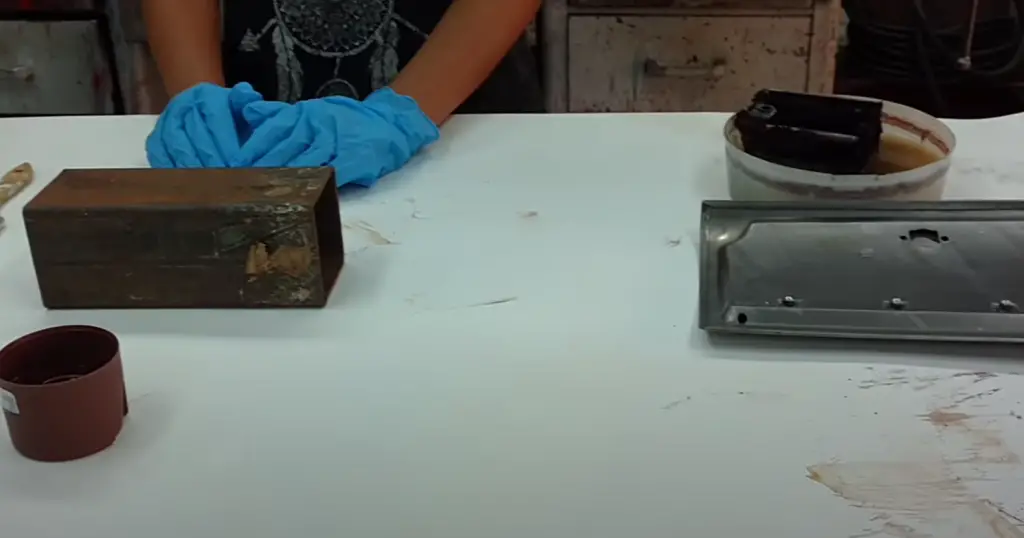
To ensure that your stainless steel lasts for as long as possible, it’s important to clean and polish it on a regular basis. It’s also important to avoid exposing it to water or high temperatures, as this can cause corrosion and other damage.
With proper care, your stainless steel should last for many years to come. [6]
Types of Stainless Steel
There are three types of stainless steel: austenitic, ferritic, and martensitic.
It contains about 18 percent chromium and 8 percent nickel. Ferritic stainless steel is less expensive than other types of stainless steel and is often used in automotive exhaust systems. Martensitic stainless steels are similar to ferritic steels but contain higher levels of carbon, making them harder and more brittle.When to Use Stainless Steel?
Stainless steel is ideal for use in many different applications where corrosion resistance is important, including:
- Food processing and storage
- Pharmaceuticals
- Marine environments
- Chemical processing
- Waste treatment facilities
- Architecture (exterior fixtures and fittings)
Can Stainless Steel Be Used for Everything?
Just about everybody has heard of stainless steel. It is used for all sorts of things, from kitchen appliances to automotive parts. But did you know that there is more than one type of stainless steel? In fact, there are over 150 grades of stainless steel, each with unique properties and applications.
So, what exactly is stainless steel? And why do some types of stainless steel rust while others don’t?
Stainless steel is an alloy of iron, carbon, and other metals. The addition of chromium to the alloy creates a protective layer on the surface of the metal that prevents oxygen and water from causing corrosion. This is why most types of stainless steel don’t rust.
However, the chromium in stainless steel can be depleted over time, particularly if the metal is exposed to salt water or other corrosive materials. When this happens, the metal is no longer protected from rust and corrosion.
There are several ways to remove rust from stainless steel. The best method will depend on the extent of the rusting, the type of stainless steel, and the use for the metal.
For lightly rusted stainless steel, you can try cleaning with a mild detergent or white vinegar. If this doesn’t work, you can try scrubbing with a nylon brush and abrasive cleaner like Bon Ami or Comet. For more stubborn rust stains, you may need to use a stronger cleanser like CLR or Bar Keepers Friend.
Alternatives to Stainless Steel
If you’re concerned about rust on your stainless steel, there are some alternative materials you can use that are less susceptible to corrosion. Bronze, copper, and brass all make excellent substitutes for stainless steel in many applications.
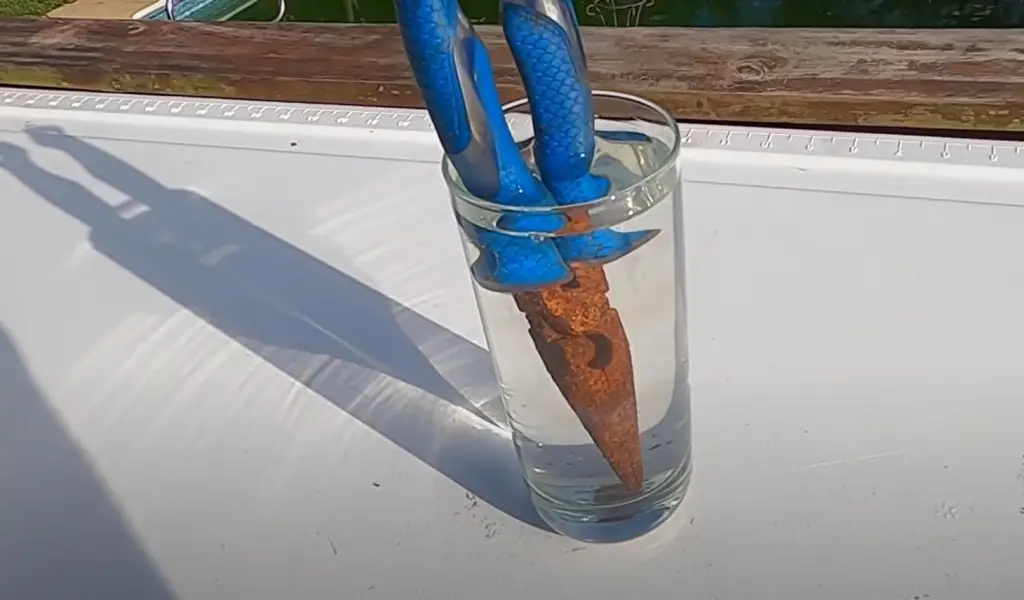
Of course, these materials come with their own set of pros and cons that you’ll need to consider before making a decision. But if rust resistance is your top priority, they may be worth considering.
No matter what material you choose, it’s important to take steps to prevent rust in the first place. This includes regular cleaning and maintenance, as well as avoiding exposure to corrosive materials whenever possible.
With a little care and attention, you can keep your stainless steel looking like new for years to come.
FAQ
What removes rust stains from stainless steel?
There are a few ways to remove rust stains from stainless steel. You can use a commercial rust remover, white vinegar, or lemon juice. If the stain is particularly stubborn, you may need to sand it off with fine-grit sandpaper.
How do you clean oxidized stainless steel?
To clean oxidized stainless steel, you will need to use a mild abrasive cleaner and a non-abrasive polishing pad. First, wet the surface of the stainless steel with warm water. Then, apply the abrasive cleaner to the surface and scrub in a circular motion. Finally, rinse the surface with warm water and dry it with a soft cloth.
Can vinegar remove rust?
Vinegar is an acidic liquid that can remove rust from metal surfaces. To remove rust with vinegar, soak the rusty object in vinegar for a few hours or overnight. Then, scrub the object with a stiff brush to remove the rust. Finally, rinse the object with water and dry it thoroughly.
Will vinegar remove rust from stainless steel?
You bet! Vinegar is a potent rust-busting agent and can remove rust from even the most durable of surfaces. All you need to do is soak a rag or brush in vinegar and scrub away at the rust stain.
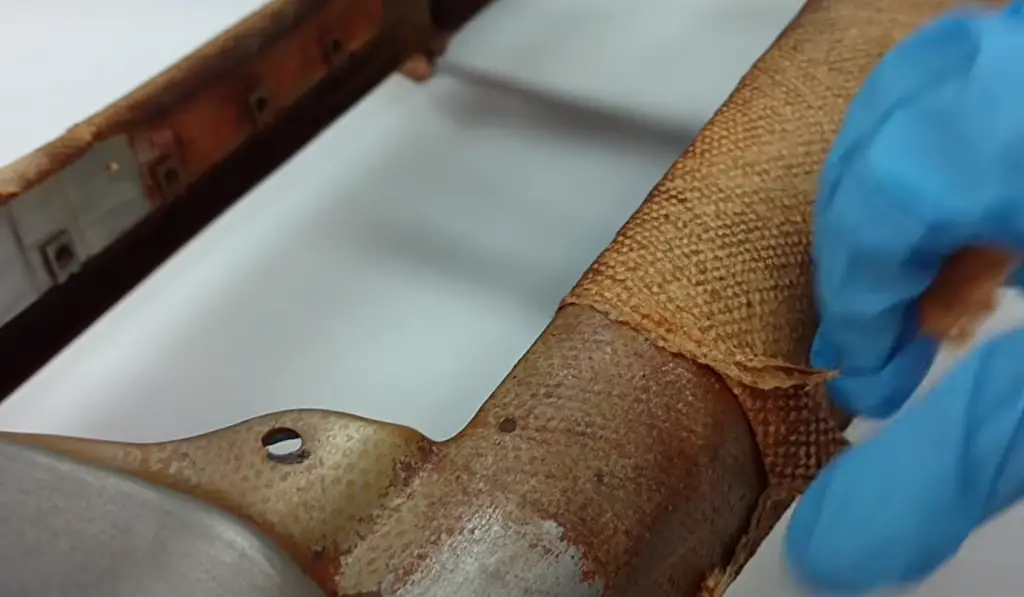
Once the rust has been loosened, simply wipe it away with a clean cloth. If the rust stain is particularly stubborn, you may need to let the vinegar sit on the surface for a few minutes before scrubbing. You can also make a paste out of vinegar and baking soda which can be used to tackle tougher rust stains. To remove rust from stainless steel using vinegar, follow these steps:
- Soak a clean cloth or brush in white vinegar.
- Scrub the rust stain with the vinegar-soaked cloth or brush.
- Wipe away the loosened rust with a clean, dry cloth.
- Repeat steps 2-3 until the rust stain is gone.
Can I remove rust from stainless steel with Coca Cola?
Coca Cola is another effective way to remove rust from stainless steel. The carbonic and phosphoric acids in Coke are great at breaking down rust and make it easy to wipe away. Simply pour some Coke onto a clean cloth and scrub away at the rust stain. Once the rust has been loosened, wipe it off with a dry cloth.
What is the best homemade rust remover?
There are a few different ways you can make your own rust remover at home. One way is to mix equal parts vinegar and salt to form a paste. This paste can be used to scrub away at rust stains. Another way is to mix baking soda and water to form a paste. This paste can also be used to scrub away rust stains. Finally, you can mix lemon juice and cream of tartar together to form a paste. This paste can also be used to remove rust stains. To sum it up, the best ways to remove rust from stainless steel are by using vinegar, Coca Cola, or a homemade paste made from either vinegar and salt, baking soda and water, or lemon juice and cream of tartar.
Does WD 40 Remove rust from stainless?
Yes, WD-40 can be used to remove rust from stainless steel. The lubricating properties of WD-40 help to loosen the bond between rust and the metal surface. This makes it easy to wipe away the rust with a clean cloth. Just spray some WD-40 onto the rust stain and let it sit for a few minutes before wiping away.
What is the best way to prevent rust on stainless steel?
The best way to prevent rust on stainless steel is to keep the metal clean and dry. This will help to prevent water and moisture from coming into contact with the metal and causing rust. If your stainless steel does become wet, make sure to dry it off as soon as possible. You should also avoid using harsh chemicals or abrasive materials on stainless steel as this can damage the protective coating on the metal and make it more susceptible to rust.
How do you reverse oxidation on stainless steel?
The best way to reverse oxidation on stainless steel is to use a polish or cleaner specifically designed for stainless steel. These products will help to remove the oxide layer from the metal and restore the shine.
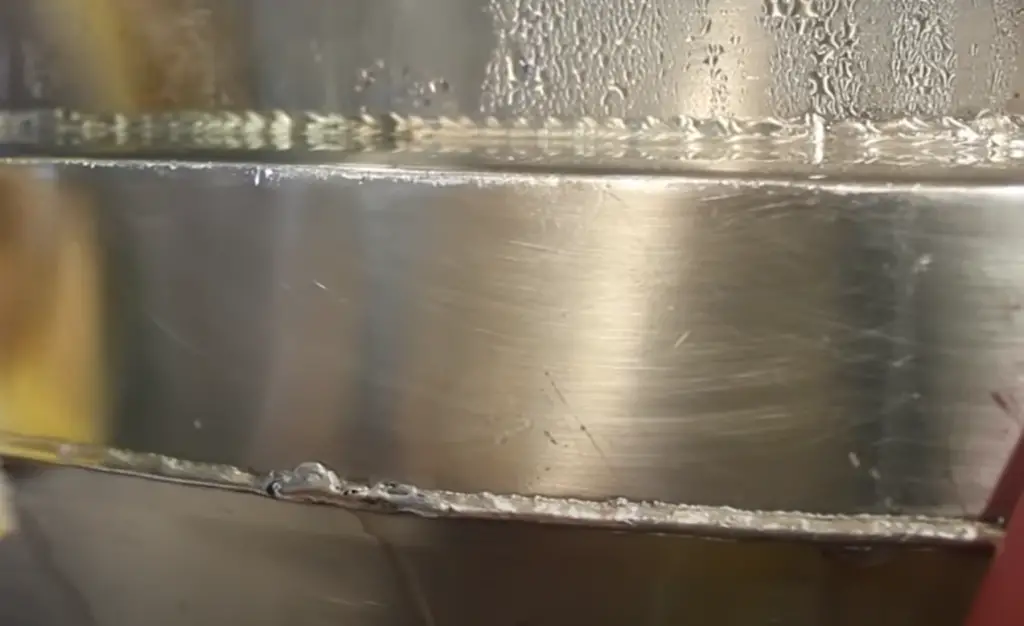
If you do not have a stainless steel cleaner on hand, you can try using white vinegar or a citrus-based cleaner. Simply apply the cleaner to a clean cloth and wipe away the oxidation.
Can you use a magic eraser on stainless steel?
Yes, you can use a magic eraser to remove rust from stainless steel. The abrasive properties of the magic eraser help to loosen the bond between rust and the metal surface. This makes it easy to wipe away the rust with a clean cloth. Just dampen the magic eraser and rub it over the rust stain. Once the rust has been loosened, wipe it off with a dry cloth.
Does rust ruin stainless steel?
No, rust will not ruin stainless steel. Rust is simply a reaction that occurs when oxygen and water come into contact with the metal. While rust can cause the metal to appear dull or discolored, it will not actually damage the metal itself.
What are some alternatives to stainless steel items?
There are a few alternatives to stainless steel items, including:
- Copper: Copper is a great alternative to stainless steel. It is durable and has a natural resistance to corrosion.
- Aluminum: Aluminum is another great alternative to stainless steel. It is lightweight and has a high resistance to corrosion.
- Titanium: Titanium is an extremely strong metal that is also resistant to corrosion. However, it is very expensive.
Useful Video: The Best Way To Remove Rust From Stainless Steel | Baking Soda Hacks
Conclusion
There are several ways to remove rust from stainless steel. The best way depends on the extent of the rusting, the type of stainless steel, and the amount of time and effort you’re willing to expend. If the rust is only minor surface discoloration, you may be able to clean it with a mild detergent or abrasive cleaner. For more serious rusting, you’ll need to use harsher cleaners or chemical Rust converters, followed by polishing. Whichever method you choose, be sure to protect your stainless steel from future rusting by regularly cleaning and drying it, and avoiding storing it in damp or humid environments.
Thanks for reading!
References:
- https://laforceinc.com/blog/why-is-my-stainless-steel-rusting/
- https://wd40.com.au/uses/how-to-remove-rust-from-stainless-steel-in-the-laundry-area
- https://www.eatingwell.com/article/7902702/cleaning-products-to-never-use-on-stainless-steel/
- https://www.thenafemshow.org/news-and-insights/8-ways-to-protect-stainless-steel/
- https://www.sswm.com.au/why-does-my-stainless-steel-have-an-unsightly-brown-discolouration/
- https://controse.com/blog/does-stainless-steel-tarnish/
- http://www.blucher-marine.com/technical/stainless-steel/



